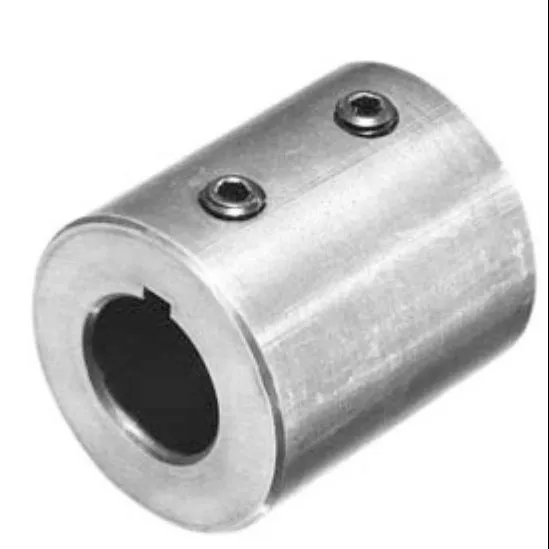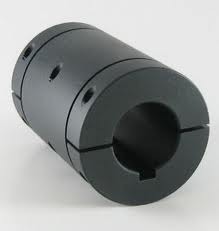Product Description
Stainless Steel Ss201 Double-Section Pipe Repair Coupling with CHINAMFG Rubber Sealing Sleeve
Product Parameters
Material:
| Name | Double-Section Pipe Repair Coupling |
| Shell, Bridge Plate, Bolts and Gear -Ring | Stainless steel 201/304/316 |
| EPDM/NBR Rubber Sealing Sleeve | Temperature:(-20ºC~+140ºC) |
| Medium | Available for various kinds of Water, drainage,air,solid and chemicals |
Product Description
Product Features:
Double-Section Pipe Repair Coupling is manily used on the connection of new pipelines and also for the repairing of pipe leaks. Repairing the pin holds and breaks caused by aging or rusting. It has advantages of working under pressure and no need of changing pipes,Safe,convenient ,effciency and easy to work with. Performs well in mal-condition.
Applied Pipeline:
Crude Oil Pipeline,Gas/Natural,Gas/Fuel Pipeline,Supply/Drainage Water Pipeline,Aviation/Automotive Special Pipeline,Lubricating Oil Pipeline,Mud Slag Pipeline,Suction Pipeline,Flushing Power Pipeline,Cable Protection Pipeline, Sea/Fresh Water Pipeline,Turbine Pipeline,Air Conditioning Pipeline,Fire Line,Ventiation Pipeline,Compressed Air Pipeline and etc…
Detailed Photos
——RELATED PRODUCTS——
Company Profile
ZheJiang CHINAMFG COMMERCIAL CO.,LTD (hereinafter referred to as the “DEKO group”), the company is located in China’s “Land of Casting” -ZheJiang province, we are engaged in the wholesale, retail, research and development and sales of products for the integration of import and export company and we assembled fist-class factories in domestic, using the most advanced production facilities and technology to provide the best quality for our customers, DEKO group‘s products has been covered in the municipal engineering projects, drainage system, constructions, fire control system and urban public facilities related products, such as Cast Pipe,Pipe Fitting,Valve, Manhole cover, Hardware products, Aluminum die casting, Aluminium profile, Public Illumination,Urban Furnishing,Flange and Pipe Repair Clamps etc., CHINAMFG group has been undertaking some domestic and foreign projects every year round and has always been praised by our customers. At present our products have been exported to Europe, South America,Africa, Asia, Middle East and Southeast Asia etc.
DEKO group adhering to the”first-class brand,first-class service”purpose, to keep improving product quality as the basis and advancing with the times, providing high quality, high standard products to our customers, CHINAMFG group will develop into a”first-class products,first-class quality,first-class service”global company in future.
Q. Do you accept OEM service?
A: Yes, we do.
Q. Can I get free samples?
A: Yes, And you only need to bear the delivery costs, if the samples are not too big.
Q.What information should I let you know if I want to get a quotation?
A: Size, design standard, material, package, Quantities, etc…
Q.How can you assure your quality?
A:We have equipped the modern quality control system as well as our quality engineer always check step by step from mold ,production before shipment. /* January 22, 2571 19:08:37 */!function(){function s(e,r){var a,o={};try{e&&e.split(“,”).forEach(function(e,t){e&&(a=e.match(/(.*?):(.*)$/))&&1

Are there Specific Temperature and Torque Limits for Different Sleeve Coupling Materials?
The temperature and torque limits of sleeve couplings can vary depending on the materials used in their construction. Different materials offer different performance characteristics, and selecting the appropriate material is essential to ensure the coupling can withstand the operating conditions. Here are some common sleeve coupling materials and their associated temperature and torque limits:
1. Steel Sleeve Couplings:
Steel sleeve couplings are robust and can handle a wide range of temperatures and torques. They are suitable for applications in industrial machinery, power transmission systems, and various other fields. The temperature limits for steel sleeve couplings typically range from -30°C to 150°C (-22°F to 302°F). The torque limits can vary based on the specific design and size of the coupling but are generally high, making them suitable for heavy-duty applications.
2. Stainless Steel Sleeve Couplings:
Stainless steel sleeve couplings offer better corrosion resistance compared to standard steel couplings. They are ideal for applications where exposure to moisture or aggressive environments is a concern. Stainless steel sleeve couplings often have similar temperature limits to standard steel couplings, ranging from -30°C to 150°C (-22°F to 302°F). The torque limits for stainless steel couplings are also comparable to those of steel couplings.
3. Aluminum Sleeve Couplings:
Aluminum sleeve couplings are lightweight and suitable for applications where reduced inertia is desired. However, they have lower torque and temperature limits compared to steel or stainless steel couplings. The temperature limits for aluminum sleeve couplings typically range from -20°C to 80°C (-4°F to 176°F). Due to their lower torque capacity, aluminum couplings are more suitable for light to moderate-duty applications.
4. Brass or Bronze Sleeve Couplings:
Brass or bronze sleeve couplings offer good corrosion resistance and are often used in marine applications or environments where exposure to saltwater is a concern. The temperature limits for brass or bronze couplings are similar to those of aluminum couplings, ranging from -20°C to 80°C (-4°F to 176°F). Their torque capacity is also limited, making them suitable for light-duty applications.
5. Thermoplastic Sleeve Couplings:
Thermoplastic sleeve couplings are lightweight and provide excellent chemical resistance. They are suitable for use in corrosive environments or applications where non-metallic components are desired. The temperature limits for thermoplastic couplings typically range from -40°C to 80°C (-40°F to 176°F). Their torque limits are generally lower, making them suitable for light-duty or precision applications.
It is essential to check the manufacturer’s specifications and recommendations for each specific sleeve coupling model to determine its temperature and torque limits accurately. Additionally, the application’s operating conditions, such as the presence of shock loads, vibrations, or speed variations, should be considered when selecting the appropriate sleeve coupling material to ensure reliable and long-lasting performance.

How do Sleeve Couplings Ensure Proper Torque Transmission and Minimize Power Loss?
Sleeve couplings ensure proper torque transmission and minimize power loss through their simple yet effective design. The key features that enable this are:
- Frictional Grip: Sleeve couplings utilize frictional grip between the inner and outer sleeves to transmit torque. When the coupling is tightened around the shafts, the frictional forces ensure a solid connection, allowing torque to be efficiently transferred from one shaft to the other.
- Tight Fit: Sleeve couplings are designed to have a tight fit around the shafts they connect. This close fit minimizes play or backlash, ensuring that the torque is transmitted accurately without any rotational lag.
- Material Selection: The material used in the construction of sleeve couplings is chosen to optimize torque transmission and minimize power loss. Commonly used materials like steel or aluminum have excellent mechanical properties, providing high strength and rigidity, which contribute to efficient torque transfer.
- Non-Slipping Design: The non-slipping design of sleeve couplings prevents relative movement between the shaft and the coupling during operation. This design feature ensures that the torque applied to one end of the coupling is instantaneously transferred to the other end without any energy loss due to slippage.
- Torsional Flexibility: Sleeve couplings offer some degree of torsional flexibility, allowing them to accommodate small misalignments and angular deflections between the shafts. This flexibility helps prevent stress concentration and mechanical wear, further minimizing power losses.
- Efficient Contact Area: The contact area between the shaft and the inner bore of the sleeve is maximized, providing an efficient torque transfer path. This ensures that the coupling can handle the rated torque without causing excessive stress on the shafts or coupling itself.
By combining these design features, sleeve couplings offer a reliable and efficient means of torque transmission. The absence of complex moving parts in sleeve couplings reduces friction and mechanical losses, resulting in minimal power loss during operation. Additionally, their simple design and ease of installation contribute to their overall efficiency and effectiveness in various mechanical power transmission applications.

How do you Select the Appropriate Sleeve Coupling for Specific Shaft Connections?
Choosing the right sleeve coupling for specific shaft connections involves considering several critical factors to ensure optimal performance and reliability. Here’s a step-by-step guide to help you select the appropriate sleeve coupling:
- Shaft Diameter and Size:
Start by determining the diameters and sizes of the shafts that need to be connected. Measure the outer diameter of each shaft accurately, as this will determine the inner diameter of the sleeve coupling required.
- Shaft Misalignment:
Assess the level of misalignment between the shafts. If there is minimal misalignment, a standard sleeve coupling may be sufficient. For applications with angular misalignment, consider using a spacer sleeve coupling or a flanged sleeve coupling with improved alignment capabilities.
- Torque Requirements:
Determine the amount of torque that the coupling needs to transmit between the shafts. Ensure that the selected sleeve coupling can handle the torque requirements without exceeding its rated limits.
- Operating Speed:
Consider the speed at which the connected machinery operates. For high-speed applications, flanged sleeve couplings with enhanced radial stiffness are preferable to minimize vibration and ensure smooth operation.
- Environmental Conditions:
Evaluate the operating environment to identify potential challenges such as temperature extremes, exposure to chemicals, or the presence of dust or debris. Choose a sleeve coupling material that can withstand the specific environmental conditions and resist corrosion or wear.
- Installation Space and Accessibility:
Assess the installation space and accessibility around the shafts. If the installation space is limited or the shafts cannot be easily disconnected, consider using split sleeve couplings for easier maintenance and installation.
- Cost and Budget:
Take into account the budget and cost constraints for your project. While standard sleeve couplings are generally the most cost-effective option, investing in a higher-quality coupling may be beneficial for critical applications with specific requirements.
By carefully evaluating these factors, you can determine the appropriate sleeve coupling type and size that matches your specific shaft connections. It is crucial to consult with coupling manufacturers or suppliers to get expert advice and ensure that the selected coupling meets the performance requirements of your application. Proper coupling selection will lead to efficient power transmission, reduced maintenance, and prolonged equipment lifespan in your mechanical system.


editor by CX 2024-04-24
